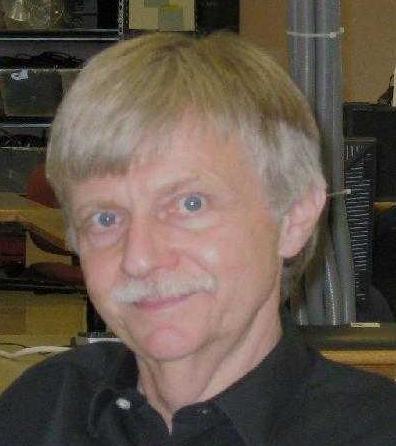Information
Please Log In for full access to the web site.
Note that this link will take you to an external site (https://shimmer.mit.edu) to authenticate, and then you will be redirected back to this page.
Course Description
A learn-by-design introduction to modeling and control of discrete- and continuous-time systems, from intuition-building analytical techniques to more computational and data-centric strategies. Topics include: linear difference/differential equations (natural frequencies, transfer functions); controller metrics (stability, tracking, disturbance rejection); analytical techniques (PID, root-loci, lead-lag, phase margin); computational strategies (state-space, eigen-placement, LQR); and data-centric approaches (state estimation, regression, and identification). For each of six two-week blocks, concepts are introduced with a combination of lectures, first-week on-line prelab problems and a build-and-test lab; and then mastered in a second-week design lab followed by a postlab exploration problem set (written). In each of the labs, students model, design, test, and explain systems and controllers involving sensors, actuators, and a microcontroller (e.g. optimizing thrust-driven positioners or stabilizing magnetic levitators). Students taking the graduate version complete a "from-scratch" project, either their own (by approval) or one of ours (e.g. standing-robot).
Prerequisites: Physics II (GIR) and 18.06/18.C06 (can substitute 18.03, Spring 2024) or permission of instructor
Lectures: Mondays and Wednesdays, 3pm, 4-163
Labs: Fridays 10am-1pm or 2pm-5pm, 38-545
Office Hours: Mondays (7:30pm-10:30pm), Thursdays (7:30pm-10:30pm), Sundays (2pm-5pm and 7:30pm-10:30pm), 38-545 (starting Sunday, Feb 11))
There are no quizzes or final exam in this subject.
Staff
Course Structure
This subject covers a curated list of topics in dynamical system modeling and control, in both continuous and discrete time. It is design-oriented, so a majority of the learning comes from working on the labs. Please work with a partner. It does not have to be the same one every week. Students who work in pairs (NOT triplets) typically get more out of the class (and have more fun).
Each "lab" spans two weeks and starts with building and "playing" with an artifact in an intro lab, which provides context for an on-line prelab, which builds skills needed for a design lab, whose issues are examined more analytically in a written postlab.
- Intro Lab: During the intro lab, you and a partner will build an artifact, experimentally explore its behavior, and discuss findings during staff checkoff interviews. This lab's goal is to familiarize you with the artifact and its control challenges, and provide context for the concepts covered in lectures and the prelab.
- Prelab: The on-line prelab includes explanations and examples of concepts covered in lectures, followed by auto-graded on-line practice problems. The questions are intended to help you test/verify your understanding, so incorrect answers can be resubmitted WITHOUT PENALTY. The prelab's goal is to help you develop the skills needed for the design lab, so please finish the prelab before starting the design lab.
- Design Lab: The design lab is intended to help you master the concepts presented in lecture and then practiced in prelab. Typically, you will derive models, use those models to design controllers, test those controllers, and then analyze your test results. The design labs are challenging, and are key learning experiences, NOT exams! We expect you to need help (from peers and/or the staff, or anywhere else), but also expect you to succeed, and be able to demonstrate comprehensive understanding during checkoff interviews. Checkoff interviews are also NOT exams! They are intended to help you uncover gaps in, or to stretch, your understanding, and can be repeated (even multiple times and during office hours) with NO PENALTY. Though, please complete the lab checkoffs before attempting the postlab.
- Postlab: The postlab is intended to help you strengthen your mastery of the concepts from lab, by having you investigate observed behavior or control extensions from a more analytical perspective. Your solutions to postlabs are staff-graded written assignments which you can submit online, in a variety of formats, including pdfs or image files of handwritten solutions (e.g. jpg or png). Solutions will be posted shortly after the due date, and students' solutions will not be accepted after the solutions are posted (see late policy below).
Office Hours
Office hours will be available at times posted on our home page, and will adjusted based on class preferences. Please take advantage of these times to finish labs and/or clarify your understanding of the course material.
Do not wait until the last minute to get help, as office hours can get very BUSY as due dates approach.
Grading and late policy
Due dates for all assignments (prelabs, lab checkoffs, and postlabs) are indicated at the top of each assignment. Generally, these due dates are at 10:30pm on the Thursday following the corresponding lab, so that you are ready to work on the new lab when it begins on Friday.
Your grades on the online questions and in-lab checkoffs are based on percentage completed, WITHOUT REGARD TO RETRIES! Your written postlab questions will be graded as check (good understanding), check+ (great understanding), or check- (conceptual gaps). You can earn an A in this subject by correctly completing at least 90% of the online questions, completing all of the lab checkoffs, and receiving an average of "check" on the top five of the six postlab problem sets. Note that this rule drops the lowest postlab grade.
Extension Policy
Our goal is to help you to get the most out of your educational experience in this subject and beyond. As with most subjects at MIT, this subject is fast-paced and challenging, though we try to minimize stress with our penalty-free retry policies (you never fail, you just haven't succeeded yet). Nevertheless, since we insist that you eventually demonstrate thorough understanding in each of more than thirty staff interviews, it can be difficult to catch up if you fall too far behind.
If you find yourself have difficulties or find yourself falling behind, please do not struggle alone. Discuss the situation with the staff, with your academic advisor, and/or S^3.
We will do all that we can to provide accomodations if unplanned issues (such as illness or personal problems) arise. Please consult an instructor if you have concerns.
Collaboration Policy
NOTE: We have borrowed the collaboration policy statement from 6.036, which follows a similar structure.
We encourage students to discuss assignments in this subject with other students and with the teaching staff to better understand the concepts. However, it is good to keep in mind the limits that ensure everybody has a good individual learning experience.
This page is designed to give you a sense of what kind of interactions are conducive to learning, and which are not, when working on 6.3100/6.3102 coursework. The policies below are in place in order to help with our primary goal for all of our assignments: that you deepen your understanding of the course materials by working through them.
All Assignments: Sharing of Work
Regardless of the assignment, you should never just use results from other students, nor from the staff (from this year or from previous years), in preparing your solutions to prelabs, labs, or postlab problems. You should not take credit for computer code or graphics that were generated by other students unless you helped develop those materials.
In addition, students should never share their solutions (or staff solutions) with other students, including through public code repositories such as Github.
Exercises and Homework ("Tutor Problems")
You are expected to give your best effort and work as far as you can on your own for every problem before asking for help or using other resources.
If you are still stuck on a problem, you may talk about the question with a staff member or a fellow student, but all exchanges of information should be general in nature. See the sample interactions below for examples of what is considered okay, and what is inappropriate.
After having received help on an exercise and reaching a solution, you should wait a day or so, and then try to work through the exercise again from scratch on your own.
Labs
You work with a partner during labs. You and your partner can equally share all results, code, and graphs that you develop as a team.
You should work through the entirety of the lab as a team to produce one result, and each partner should be prepared to discuss their results with a staff member during a lab checkoff. A "divide-and-conquer" approach, where each partner only works through a portion of the lab, is unacceptable.
Each partner should enter exercise and homework answers on their own account,but in lab, you work as a team. Each partner should have a copy of any results, code, and graphs that you developed as a team. If you can, you may share a single hardware kit, but please remember that you will each need working hardware to demonstrate in the final one-on-one interviews.
Consequences
We want to teach feedback control, not police the occasional lapse in judgement. And since we have individual interviews at the end of each lab, we have little reason to examine issues of aggregious copying. So we offer the following senarios, borrowed from 6.036, because we believe that you will learn more from the on-line problems if you avoid some of the problematic sharing issues described below.
Sample Interactions
(Borrowed from 6.036, Fall 2017)
Scenario: Alyssa and Ben sit down to work on a homework set together...
After trying a question on his own, Ben asks Alyssa for help. Alyssa asks Ben a leading question that helps him discover a reasonable next step to take when solving the problem.
 OKAY!
OKAY!
After trying a question on his own, Ben asks Alyssa for help. Alyssa talks Ben through some key ideas using a separate but related example problem. Ben then tries to apply these ideas to the problem he was stuck on.
 OKAY!
OKAY!
Alyssa notices that Ben is struggling with a problem, so she gives him her answer and explains to him how she arrived at it.
 NOT OKAY
NOT OKAY
After trying a question on his own, Ben asks Alyssa for help, and she explains that it is easy: you just take equation 3.12 from this book, insert equations 2.5 and 3.2, integrate, and you should get the right answer!
 NOT OKAY
NOT OKAY
After trying a question on his own, Ben asks Alyssa for help. Alyssa describes in detail the steps she took to solve the problem.
 NOT OKAY
NOT OKAY
Bob has access to a "bible" of 6.3100/6.3102 answers from previous terms, which he consults when he gets stuck.
 NOT OKAY
NOT OKAY
After having made reasonable efforts individually, Alyssa and Ben talk in general terms about different approaches to doing a problem. They draw diagrams on a whiteboard. When Alyssa discovers a useful analysis trick, she mentions it to Ben. When Ben makes an observation about op-amps, he shares it with Alyssa.
 OKAY!
OKAY!
In a tricky part of the homework, Alyssa and Ben look at each other's screens and compare them so that they can get their answers right.
 NOT OKAY
NOT OKAY
After they have both solved a problem, Alyssa and Ben talk in detail about the approaches they took, and the relative merits/drawbacks of each.
 OKAY!
OKAY!
Alyssa and Ben sit down to work on a homework set together. They decide to divide up the problems: Alyssa will work through the even-numbered problems, and Ben the odd-numbered ones. When they are done, they will discuss their work with each-other so that each has a complete solution.
 NOT OKAY
NOT OKAY
Scenario: Louis had a very busy week, and he has made almost no progress on the week's problem set. Ben wants to help.
Ben works near Louis and answers his questions when they come up, after Louis has made a reasonable effort.
 OKAY!
OKAY!
Ben opens his laptop and consults his own answers when helping Louis.
 NOT OKAY
NOT OKAY
Ben has been helping Louis for a while, but he needs to get back to his own work. He gives his answers to Louis, after Louis promises only to look at it when he really has to.
 NOT OKAY
NOT OKAY




